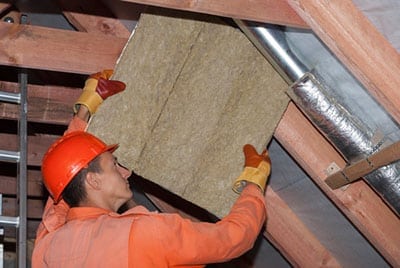Introduction
As far as interior spaces are concerned, the ideal is to have a place that is warm in winter and cool in summer. This does not only save money in terms of heating and cooling expenses, but it also adds to the comfort levels inside a home. When it comes to temperature control during the different seasons, there are certain things that work incredibly well. The combination of Mineral Wool and Multifoil is one of them. Let’s take a look at this combination and why it is such an effective insulation solution.
Multifoil
Multifoil is one of the best ways to insulate roofs, walls, and floors due to its high performance, thin profile, improved air-tightness and reflective properties. Our standard SF19+ has a high Thermal R-Value of 2.49 (in a roof). This is the equivalent insulating performance as 120mm thick fibre insulation. Because SuperFOIL in installed across the face of the timbers, you reduce the effects cold bridging, eliminating “cold spots”.
Installation of multifoil is incredibly quick and easy; just cut, fix and seal. SuperFOIL is very cost effective when compared to conventional rigid insulation methods.
Mineral Wool
Mineral wool is a dense, blown fibre material that is used for insulation. Mineral wool adds enhanced acoustic performance to the structure as well as thermal. It is easier to handle than fibreglass, and you can easily cut it to fit your wall or roof spacings. Mineral wool slabs (also known as batts) will keep its form over time, so you don’t have to fasten it to the timbers or the back of the wall.
Solution
One of the most effective insulation options is to use mineral wool in combination with multifoil. 120mm of mineral wool on its own may give a U-value of around 0.24. When you add a layer of multifoil such as SF19+, this U value improves to around 0.18 helping you to achieve typical retrofit building regs easily. This solution also has many additional benefits that aren’t achieved by using a traditional approach, for example by adding the multifoil you will also significantly improve air tightness. Draughts in your home can make the room much less comfortable and the “wind chill” factor typically requires up to 3 degrees higher room temperature to combat. Compared to foam board solutions there are also significant cost savings in terms of both materials & labour with a mineral wool & SF19+ solution coming in at around £10 per sqm vs 125mm PIR at around £20 per sqm.
Conclusion
Multifoil Insulation has many great benefits over traditional insulation, their radiant barrier properties can reduce solar heat gain during the hot summer months and keep the interior heating inside during winter. They can also be used to minimise the effects of cold bridging by timbers and offer an airtight solution to help reduce draughts. Mineral wool is a very cost-effective way to insulate provided you have enough space and has many additional benefits such as its acoustic performance helping to reduce noise pollution.
Both mineral wool and multifoil are great insulations, in their own right. By using them together in a “combi” system you can take advantage of both insulations best qualities to improve overall efficiency at a reduced cost. This will ensure you get great value for money and can be confident your home is insulated to the highest standard.
There are numerous options available for effective insulation whether you’re working on a new build, extension or loft conversion. When you are working on your next project give this solution a shot and see for yourself just how effective it really is.

